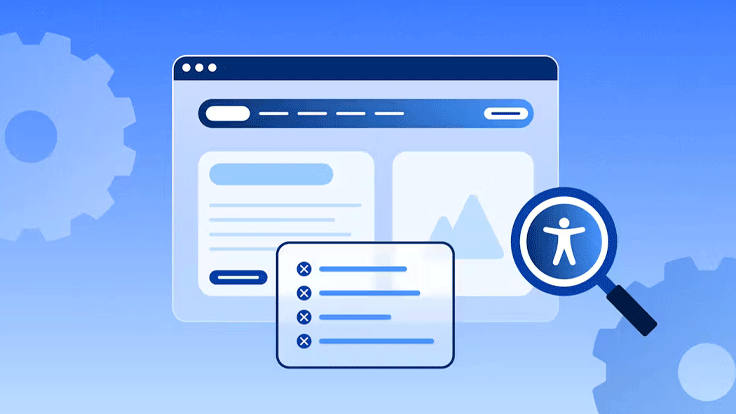In today's digital landscape, creating inclusive online experiences is not just a moral imperative but a legal requirement. As we strive to make the web accessible to all users, regardless of their abilities, accessibility testing tools have become indispensable for developers, designers, and content creators. These tools help identify and rectify barriers that might prevent individuals with disabilities from fully engaging with digital content.
Let's explore ten essential accessibility testing tools that can significantly enhance your website's inclusivity and user experience.
The Importance of Web Accessibility
Before diving into the tools, it's crucial to understand why web accessibility matters. Millions of people worldwide live with disabilities that affect their ability to navigate the internet. By ensuring your website is accessible, you're not only expanding your potential audience but also complying with legal standards like the Web Content Accessibility Guidelines (WCAG) and the Americans with Disabilities Act (ADA).
Accessibility testing tools play a vital role in this process by automating the detection of common accessibility issues, saving time and resources while improving the overall quality of your digital products.
1. Automated Testing Tools
These tools can quickly check for common accessibility issues, though they may not catch everything.
• WAVE (Web Accessibility Evaluation Tool)
A popular tool for evaluating web content, providing visual feedback about accessibility issues.
Website: wave.webaim.org
• axe Accessibility Checker
A browser extension that checks for WCAG (Web Content Accessibility Guidelines) conformance and generates detailed reports.
Website: deque.com/axe
• Lighthouse
A built-in tool in Chrome DevTools that audits web pages for performance, SEO, and accessibility.
o Available in Chrome DevTools (F12 or right-click → Inspect → Lighthouse tab)
• Siteimprove Accessibility Checker
A tool that helps improve web accessibility by identifying issues based on WCAG standards.
Website: siteimprove.com
• Tenon
A paid accessibility testing tool that checks websites for conformance to WCAG guidelines and provides easy-to-understand reports.
Website: tenon.io
2. Browser Extensions
These tools integrate directly into browsers to help identify accessibility issues while browsing.
• axe Accessibility Checker
A browser extension that checks for WCAG (Web Content Accessibility Guidelines) conformance and generates detailed reports.
o Available for Chrome and Firefox.
• WAVE Extension
The WAVE extension provides instant visual feedback on web pages with issues and solutions.
o Available for Chrome and Firefox.
• Lighthouse Extension
A browser extension for running Lighthouse audits directly from the browser.
o Available for Chrome.
3. Screen Reader Simulators
These tools simulate how a web page would be read by a screen reader to assess whether content is being properly communicated to users with visual impairments.
• NVDA (NonVisual Desktop Access)
A free screen reader for Windows that helps developers test how their websites are experienced by blind users.
o Website: nvaccess.org
• VoiceOver (macOS/iOS)
A built-in screen reader for macOS and iOS devices that lets you test web content for accessibility.
• JAWS (Job Access With Speech)
A widely used screen reader for Windows.
o Website: freedomscientific.com
• ChromeVox
A screen reader for Google Chrome and ChromeOS..
4. Color Contrast Tools
These tools help ensure that there is sufficient color contrast between text and its background for users with visual impairments.
• Color Contrast Analyzer
An app that allows you to check color contrast ratios between text and background colors.
o Website: tpgs.com
• Contrast Checker by WebAIM
A simple tool to check if color combinations meet WCAG guidelines for accessibility.
o Website: webaim.org/resources/contrastchecker
• Accessible Colors
A free online tool that allows you to check and find accessible color combinations for websites.
o Website: accessible-colors.com
5. Keyboard Navigation Testing Tools
These tools help test if a website can be fully navigated and interacted with using only a keyboard.
• Focus Indicator Tools
Use tools like Chrome’s developer tools or custom JavaScript code to check how keyboard focus indicators appear on interactive elements.
• Keyboard Accessibility Testing in Browser
Simply try navigating a site with your keyboard (Tab, Shift+Tab, Enter, etc.) to ensure all interactive elements are accessible.
6. Manual Testing and User Testing
While tools can catch many common accessibility issues, manual testing remains an essential part of the process, especially for complex interactions.
• User Testing with Assistive Technology
Conduct usability testing with real users, especially those with disabilities, to get real feedback on the accessibility of a website.
• Voice Navigation
Test your site using voice commands (like Siri, Google Assistant, or Voice Control on macOS) to see how it handles speech-based input.
7. Code Validators
These tools validate the underlying HTML, CSS, and JavaScript code to ensure that it meets accessibility standards.
• W3C Markup Validation Service
Ensures that your HTML is error-free, which can contribute to better accessibility.
o Website: validator.w3.org
• CSS Validation Service
Ensures that your CSS code is compliant, avoiding visual issues that may impact accessibility.
o Website: jigsaw.w3.org/css-validator
8. Comprehensive Accessibility Audit Tools
These tools combine various testing techniques and audits to give detailed reports on accessibility and other factors.
• Google Chrome DevTools
The built-in accessibility features in Chrome DevTools allow for inspecting and debugging web pages for accessibility issues.
• aXe DevTools
An advanced version of the axe tool that provides deep insights into accessibility issues across a website.
9. PDF Accessibility Checkers
For testing PDFs for accessibility issues:
• PDF Accessibility Checker (PAC)
A tool to check the accessibility of PDF files based on the PDF/UA standard.
o Website: accessibility.co.at
10. Pa11y
Pa11y is a set of free and open-source tools to help designers and developers make their web pages more accessible.
Key Features:
How to Use:
Install Pa11y using npm and run it from the command line, specifying the URL you want to test. Use the dashboard for ongoing monitoring or integrate it into your CI pipeline for automated checks.
Why It's Essential:
Pa11y's flexibility and automation capabilities make it an excellent choice for teams looking to incorporate accessibility testing into their development and deployment processes.
Conclusion
Incorporating these accessibility testing tools into your development workflow can significantly improve the inclusivity and usability of your websites and applications. Remember that while these tools are invaluable, they should be used in conjunction with manual testing and user feedback for the best results.
By prioritizing accessibility, we not only comply with legal standards but also create better experiences for all users, regardless of their abilities. As technology continues to evolve, staying informed about the latest accessibility tools and best practices is crucial for building truly inclusive digital environments.






